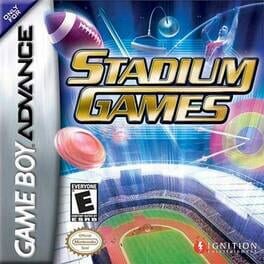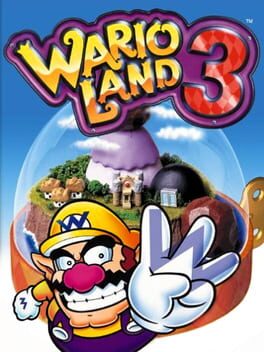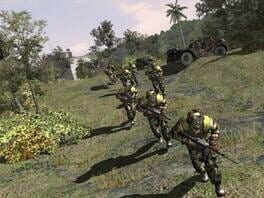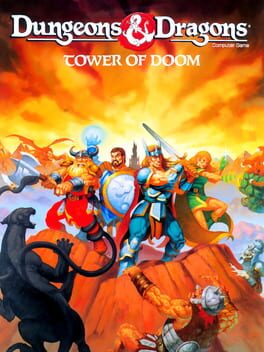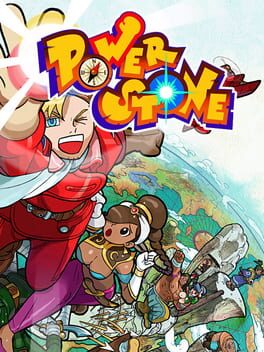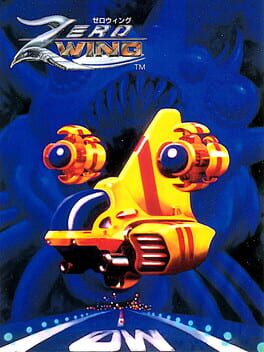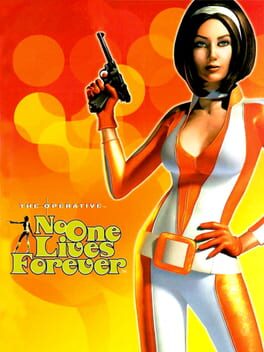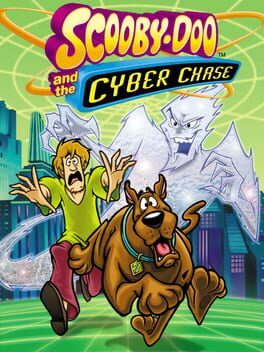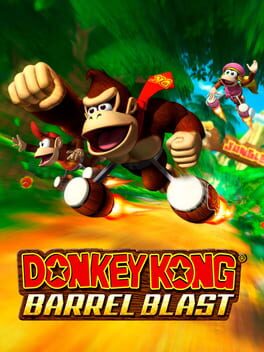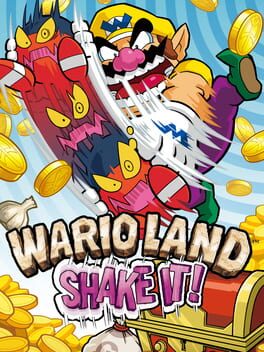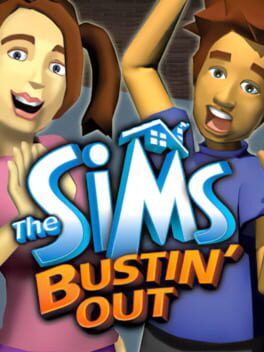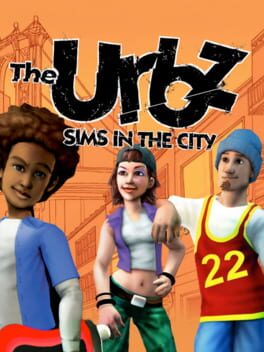MacBlank
2004
Let me tell you a story. My father has gotten into hardware modding for Game Boys, and he's picked up a couple little games purely to test his modified consoles. He put together one such mod for me - an HDMI-compliant console version of a GBA - and we used this game to test it. Presented with the choice between "Practice" and "Tournament", I opted with the latter and figured I'd run through as much as I could before I got bored.
After a generic skeet-shooting game and five variants of Megaton Punch that failed to spell out whether you wanted to go for the END of the meter or the MIDDLE of the meter, the Tournament was over. I managed to clear the game in 5 minutes, even in spite of the old TV's constant flickering.
It's a score attack game, ostensibly, so the point is to get multiple players competing with one another. But, like... then what? Why would you do that here rather than in just about any other game? If my father had gotten this game in anything besides a lot of GBA carts or with a console, he would've been ripped off.
...but it doesn't offend.
After a generic skeet-shooting game and five variants of Megaton Punch that failed to spell out whether you wanted to go for the END of the meter or the MIDDLE of the meter, the Tournament was over. I managed to clear the game in 5 minutes, even in spite of the old TV's constant flickering.
It's a score attack game, ostensibly, so the point is to get multiple players competing with one another. But, like... then what? Why would you do that here rather than in just about any other game? If my father had gotten this game in anything besides a lot of GBA carts or with a console, he would've been ripped off.
...but it doesn't offend.
2000
A more polished, more paced-out Wario Land 2. All of Wario's inherent abilities have been turned into upgrades, leading to a more deliberate difficulty curve. Takes some getting used to, but there's enough help in the game itself that the player's never (no, never? Hardly ever) at a loss for what to do next. As with the previous game, this speed of Wario isn't for everyone, particularly since it's designed around being tedious and wasting the player's time. But that's also very much the appeal, that sense of constantly having to try again to get the dumb yellow plumber guy beaten up and into the right dang spot. Very methodical, puzzle-oriented platformer with very careful level design.
Golf is kind of nothing, and your take on any of the remaining pay-off comes down to how much the game resonates with you. Personally, Rudy, the credits, and PERFECT! are all worth it, but your mileage may vary.
Golf is kind of nothing, and your take on any of the remaining pay-off comes down to how much the game resonates with you. Personally, Rudy, the credits, and PERFECT! are all worth it, but your mileage may vary.
2004
Kind of basic quarter-munching shooting gallery. Mean and stingy with some of its requirements, especially the time limit and boss stages. Messing up a SINGLE stage will "fail" the mission, even if you keep restarting play. The shotgun controller is fun, but probably nothing unique to this game (and confusing when you're using any gun besides a shotgun). My player 2 and I had difficulties shooting on the right side of the screen, but I think that was more a dead spot on the physical cabinet than anything.
Kind of a cool experiment for arcade! AD&D 2.0 is before my time, but it's easy to see how well the license is used here, between literal ideas (the troll boss being "unkillable" until NPCs firebomb it is a cute touch) and general structure (branching paths feels like a very natural expression of a winding D&D campaign in the beat-'em-up genre). Flamewing is a well-executed sucker's trap of a bonus boss.
Kinda lonely and imbalanced for singleplayer, but that's pretty true to form for D&D.
Kinda lonely and imbalanced for singleplayer, but that's pretty true to form for D&D.
1999
A good example of how to do a party fighting game that isn't a platformer fighter. Simple, especially compared to much of Capcom's output, but this makes the game very approachable. Power Stone system theoretically makes play shift very quickly back-and-forth, but in practice it's easy for one side to stomp the other. Play is quick enough that it stays engaging across rounds. Would imagine this is very fun in a multiplayer setting.
Kinda felt skeevy playing as Rouge.
Kinda felt skeevy playing as Rouge.
2023
Oh, wow. The draw is in the aesthetics, naturally (Peppino is a wonderfully expressive character, there's precisely the right amount of farcical energy in the MS Paint-esque art style, and "It's Pizza Time" is never not hype), but the real strength is in game feel. Easy enough to clear casually, challenging to master, with lots of steps of incremental growth throughout (there's a great skill pipeline from A- to S- to P-ranking a level). The game is constantly experimenting and reinventing itself, and just when you think you have a feel on what the game is going to be, it introduces something brand new. But its myriad systems never feel at odds with one another, just like a natural expression of the core gameplay loop through different modes.
One of those games where there's so much more untapped potential to it, but I almost don't want to see a mod scene develop because it would make every individual level in the core game a little less special.
One of those games where there's so much more untapped potential to it, but I almost don't want to see a mod scene develop because it would make every individual level in the core game a little less special.
This review contains spoilers
Maybe this comes down to when I played it: the near-capstone to a years-long series marathon, during which this title was announced and released. But wow, did this impact me.
The essence of a given Kirby game comes down to whatever theme the game is exploring and the sequences during which that theme is best expressed. For much of the series, this comes in the finale: Dream Land 2, Blowout Blast, Planet Robobot, Star Allies. This makes sense; it's the capstone to the experience, and the brilliant light at the end of the labyrinth that makes it all worth it. We remember the rest of the game fondly, at times in spite of itself, because of the strength of this essence.
In Forgotten Land, the essence is expressed at its clearest in the first moments of the game, and it never stops.
Sure, Forgotten Land is the first full-length 3D game in the Kirby series. Sure, it is imaginative in how it contextualizes long-standing abilities with respect to the Z-axis. Sure, the new characters are instant favorites - and perhaps Sillydillo is the greatest level boss Kirby's ever had. Sure, there's so, so much more that can be done with this template. But that's not what the game means to me.
Forgotten Land is a game of quiet contemplation and little joys. It takes place in the ruins of civilization - almost assuredly our own - but it never feels somber or sad for it. There is wonder in every little thing, as Kirby discovers something new to him in the wastes of what was old to us. There is life in all things, in the reclamation of urban space and abandoned wastes. There is serenity in the end of time, and the promise that more will come after it - even if we will never understand it. And there are so, so many small experiences - wholly unimportant and uninvolved with the impetus to the adventure - that exist solely for the player to discover and enjoy themselves. This is without even getting into the narrative text of the game - Dedede's greatest act as a King and Friend, Meta finding something to fight for greater than his own interests, the corruptive but wondrous power of thought, the kernel of love and peace that rests within hate and chaos.
For me, Forgotten Land isn't just a good game. It's a game I'm grateful for. It's a game I consider myself lucky to have experienced. It's a "My God, life is worth living" kind of game.
The essence of a given Kirby game comes down to whatever theme the game is exploring and the sequences during which that theme is best expressed. For much of the series, this comes in the finale: Dream Land 2, Blowout Blast, Planet Robobot, Star Allies. This makes sense; it's the capstone to the experience, and the brilliant light at the end of the labyrinth that makes it all worth it. We remember the rest of the game fondly, at times in spite of itself, because of the strength of this essence.
In Forgotten Land, the essence is expressed at its clearest in the first moments of the game, and it never stops.
Sure, Forgotten Land is the first full-length 3D game in the Kirby series. Sure, it is imaginative in how it contextualizes long-standing abilities with respect to the Z-axis. Sure, the new characters are instant favorites - and perhaps Sillydillo is the greatest level boss Kirby's ever had. Sure, there's so, so much more that can be done with this template. But that's not what the game means to me.
Forgotten Land is a game of quiet contemplation and little joys. It takes place in the ruins of civilization - almost assuredly our own - but it never feels somber or sad for it. There is wonder in every little thing, as Kirby discovers something new to him in the wastes of what was old to us. There is life in all things, in the reclamation of urban space and abandoned wastes. There is serenity in the end of time, and the promise that more will come after it - even if we will never understand it. And there are so, so many small experiences - wholly unimportant and uninvolved with the impetus to the adventure - that exist solely for the player to discover and enjoy themselves. This is without even getting into the narrative text of the game - Dedede's greatest act as a King and Friend, Meta finding something to fight for greater than his own interests, the corruptive but wondrous power of thought, the kernel of love and peace that rests within hate and chaos.
For me, Forgotten Land isn't just a good game. It's a game I'm grateful for. It's a game I consider myself lucky to have experienced. It's a "My God, life is worth living" kind of game.
1989
Arcade version, so no "All Your Base". Game reads as low-stakes Gradius, with two permanent Options giving you constant firepower. Most interesting thing is the power-up system: three different weapon types, collecting multiple of a given color pick-up powers the weapon à la Diddy Kong Racing, losing a life returns you to the base version of that weapon. That and the tractor beam - essentially turning an enemy into a shield or throwable projectile - are interesting ideas. But the game lacks confidence in its ability to do much with those ideas. You don't actually need to beat the bosses - survive long enough and the boss goes away. The game feels very arbitrary with unlimited continues, though it probably makes for an interesting growth cycle in limited play; get good enough to beat the game, then get good enough to beat the game by defeating the bosses.
Makes sort of a bad first impression with the first few levels; the game feels more natural as an action FPS than a stealth FPS. "Berlin by Night" is a big wall and what turned me off of the game on my original attempt. Get past that, and everything starts coming together. Lots of fun with the writing, aesthetic, and scenarios. The PS2 version isn't a huge downgrade, but the game's clearly designed around late 90s PC FPS conventions (i.e. Quick Save, replay, selectable loadouts, etc), and those absences (plus the original OST!) are sorely missed. "Nine Years Ago" missions are sort of whatever. Great candidate for a game to be remade, if the rights issues ever get sorted out.
Well, bad. Game is at odds with itself. The big blinking "CHANCE!" notification telling you when to attack bosses is condescending but acceptable if the game is meant for people who don't play video games. But then you have late-game platforming sequences like the string of catapults in Amusement Park Level 2, which require a skill threshold to weave around. Switching between Shaggy and Scooby is a fun idea, but there's no reason for which character you play as - Shaggy is arbitrarily gated to specific worlds. The joke (well, joke-ish... kind of a diet joke) of the levels in the original movie being arbitrary environments because that's how video games be sometimes is lost, resulting in a video game with arbitrary environments. The game was also clearly designed with only a loose idea of what the movie's structure would look like; understandable, since licensed developers have to work with what the studio gives them, but it's sort of obvious. NO SHOEHORNED BASEBALL REFERENCES 0/10
But hearing the characters talk with their movie voice actors is nice, and I can accept that the game just isn't designed for someone who plays a lot of video games. It's possible to do a game like that way better, but this game doesn't offend or anything.
But hearing the characters talk with their movie voice actors is nice, and I can accept that the game just isn't designed for someone who plays a lot of video games. It's possible to do a game like that way better, but this game doesn't offend or anything.
Not bad. There's a solid core, even if the game never fully comes together outside of Temple Heights and most of Candy's Missions (those "Avoid All Obstacles" missions can update their home to the death barrier). Character picks are fun, and the Kremling OCs are great - wish they existed in more than this. It feels like there's a phantom game after the Kongas/Jungle Beat that should justify this game's existence; the state of Donkey Kong as a franchise in 2007 definitely didn't support a racing spin-off like this. But it's not bad.
The start of a revival that never really happened. This is a good first draft of what new Wario Land games could have looked like, drawing elements from throughout the series but mostly referencing Wario Land 4. I think making speed a finite resource (i.e. that you have to use a Max Fastosity Dasherator to run) is a good way to balance Wario Land's puzzle tendencies with Wario Land 4's desire to be a speed game. Boy howdy do I miss transformations, and do I wish some of the boss fights were a little faster. The game isn't too experimental either, outside of its aesthetics (gorgeous; this man's butt has never looked so good) and a few late-game levels. A game that really needed a sequel to capitalize on its rough draft. Maybe some day.
1992
Alright, so, most of the game's appeal is in the surface-level stuff. "Arabian Fight" is a great name and perhaps carries the experience all on its own. Sprite scaling is a really neat effect, and there's a few other fun visuals, like the use of anime overlays when a character does a super move or jumps from the foreground into the fight. Goldor picking up a dude and throwing him into the foreground never gets old. Enemy picks like mummies and lamia are fun, even if they make no sense in this setting. Recurring bosses Elbow and Shoulder are fun (Fire Fatman kinda sucks).
...that's about it. Not a whole lot exciting to the game, little in the way of sophisticated or complicated challenges. You run into readability issues with the specific camera angle used here. I did this singleplayer, but I imagine it's a lot easier to take out some of the bosses who rely so heavily on directional attacks and positioning (but is that common in Beat 'Em Ups? I've only ever really done them solo).
...that's about it. Not a whole lot exciting to the game, little in the way of sophisticated or complicated challenges. You run into readability issues with the specific camera angle used here. I did this singleplayer, but I imagine it's a lot easier to take out some of the bosses who rely so heavily on directional attacks and positioning (but is that common in Beat 'Em Ups? I've only ever really done them solo).
2003
Fun! RPGs make for a very natural template for a Sims adventure. Having missions and new houses you're working up towards gives you good goals to work towards. There is a lot of grinding, though I imagine this feels natural when taken in hand-held, bite-sized chunks. A good game to sit with and work towards over a long period of time. What is even going on with the words coming out of the main character's mouth.
I think this vs Bustin' Out comes down to preference over the things each game does better than the other. Bustin' Out better characterizes the player character, Urbz better characterizes the rest of the cast. SimValley is a more interesting setting mechanically, but Miniopolis's New Orleans slant is more interesting aesthetically. Bustin' Out is grounded (insofar as the Sims is ever grounded), Urbz is more out-there. I think I like the overall gameplay loop to Urbz more, much as I feel there's more purpose to Bustin' Out. I prefer the pay-off for certain character arcs in Urbz, as much fun as the characters are in the out-of-context existence in Bustin' Out. But both are good!
